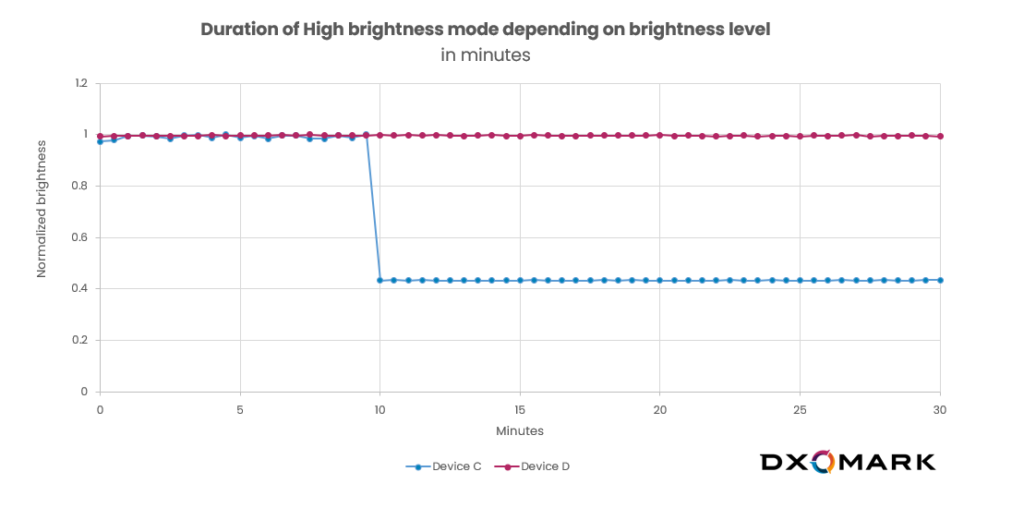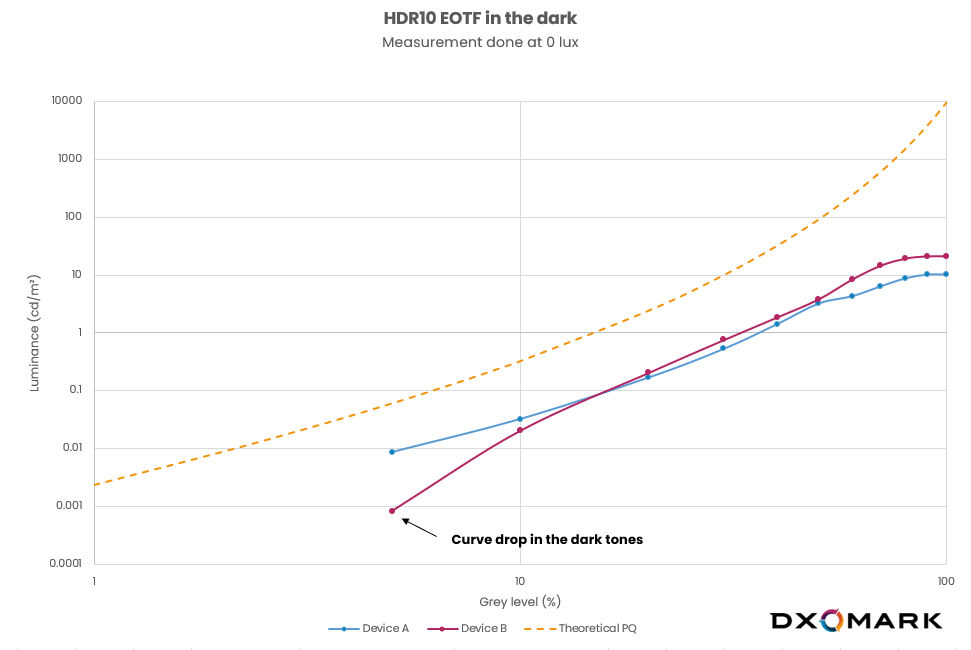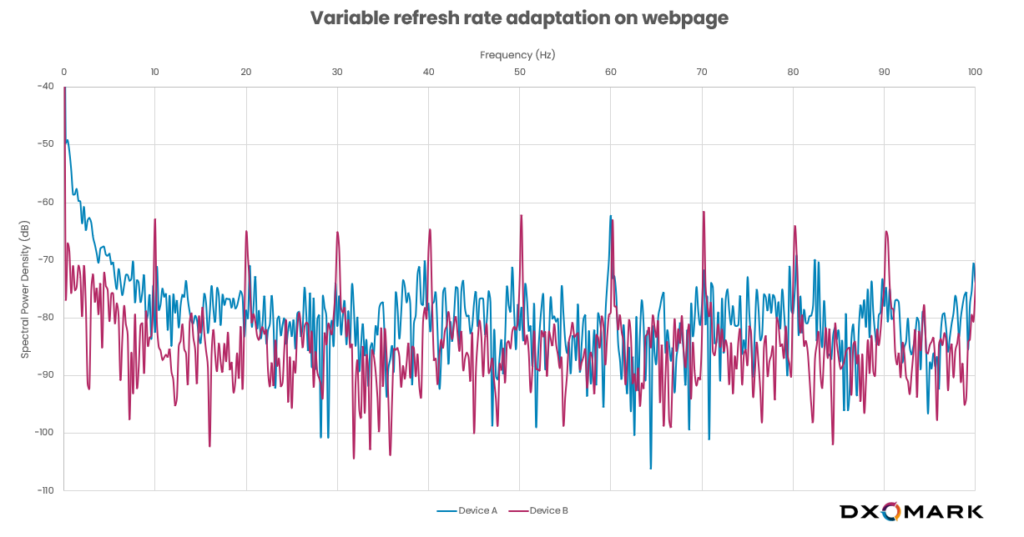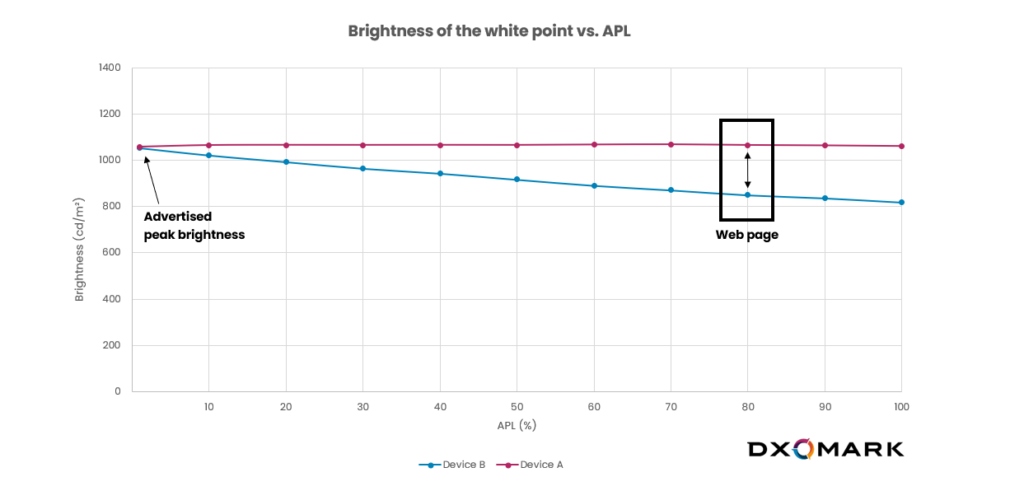Smartphone displays showed a steady stream of enhanced software features and optimizations last year that provided continuous improvements to the user experience. This underscores the fact that a device’s performance doesn’t solely depend on its hardware specifications. Software is a critical “make or break” factor in how well a smartphone works. Manufacturers often issue updates to firmware to correct problems or to optimize one or more aspects of a device’s performance.
Smartphones use programs or algorithms to control many display functions and other features (a process known as “tuning”). Unsurprisingly, a device with poor tuning cannot deliver a great performance, no matter how cutting-edge its hardware may be. The more careful the tuning, the more a device can live up to its hardware’s ability to meet or surpass customers’ expectations. Tuning also has an impact on customers’ hands-on experience: based on testing and analysis, manufacturers make choices about (for example) display brightness levels and color profiles, but they also choose how much or how little end users can adjust those default settings. Another major role of tuning is to manage tradeoffs on the smartphone, — for example, employing a refresh rate of 120 Hz at all times will impact battery life. Tuning makes it possible to find a balance between smartphone constraints and user preferences.
Let’s look at a few ways in which hardware tuning can impact the end-user experience. In the examples below, we compare pairs of phones with similar hardware specifications.
Example 1: Peak brightness
Advertised peak brightness does not automatically reflect what users experience. OLED peak brightness is adjusted based on the Average Picture Level (APL), which is the brightness of the image averaged across the whole content displayed on the screen; this means that under intense lighting, a simple white dot on a black background shows more brightness at maximum capacity than a full white screen. On OLED screens, brightness usually decreases with increasing APL; however, manufacturers can choose through tuning to provide consistent display brightness, as shown in the graph below:
Device A and Device B advertise the same peak brightness of around 1000 nits. However, Device A corrected its APL curve through tuning, while Device B did not. If displaying just a white dot, both devices will reach a little over 1000 nits, but on a web page (~80% APL), Device A still provides a peak brightness of 1000 nits, while Device B provides only around 800 nits. In this instance, the specifications are misleading, as the user experience is very different between the two devices.
Manufacturers need to carefully tune the brightness, given its strong impact not just on user experience but also on how long a battery charge will last, for example: keeping high brightness all the time regardless of screen content can reduce battery life. In other words, even if the hardware component is capable of delivering very high peak brightness, only software can ensure that the brightness is adjusted to deliver the best user experience and to make sure it is consistent with battery constraints.
Example 2: High Brightness Mode
Although there is no standard definition of “high brightness mode” (HBM), most manufacturers claim to equip their smartphones with this feature, which activates under intense ambient lighting and provides a temporary boost in readability. There are many ways to implement HBM on smartphones, with most involving pushing the brightness, compensating for the ambient lighting reflection through tone mapping, and/or saturating the colors. Each OEM can adjust those settings to what they think is best for the user experience.
Whatever the approach to HBM, it is important for manufacturers to test many different kinds of content to avoid surprises, such as shown below:
Even though Device A may render other content well in HBM, its brightness boost and oversaturated rendering of the poppy’s petals obliterates all their details, and there is visible ringing along the edges of the blurred poppy in the background. While the brightness boost of Device B is less dramatic, most of the flower’s details are visible.

Another aspect of HBM is that even with the same hardware specifications, devices do not keep the brightness boosted for the same amount of time; how long it stays on is up to the manufacturers, who try to find the best balance between brightness and readability versus battery life and overheating (which can impact the behavior of device components). The graph above shows the HBM for a different pair of devices: Device C stays on for only 10 minutes, while Device D provides 30 minutes of HBM under the same lighting conditions.
Example 3: Video tone mapping
Precise tuning is crucial to respect the filmmaker’s artistic intent and to provide the best rendering possible. In this example, both devices are compatible with Dolby Vision and HDR10+; their technical specifications are identical; further, because they are both from the same brand, we might assume that their tuning would also be similar. However, Device A shows a lack of detail in the dark tones of HDR videos due to inaccurate tone mapping, as shown in the curve and comparison photo below.

The Electro-Optical Transfer Function is how the numerical signal from a video is converted into a luminance value out of the display.
The drop in the EOTF around the dark corresponds to the complete disappearance of the roof tiles in Device A’s rendering, resulting in a fully dark area in the video. Device B has a different color rendering, is closer to the artistic intent, and provides more details (and thus a better viewing experience overall).
Example 4: Variable Refresh Rate
The two main thin film transistor (TFT) technologies for OLED are low-temperature polycrystalline oxide (LTPO) and low-temperature polycrystalline silicon (LTPS); To keep it simple, the major differences between them are:
• Both LTPO and LTPS provide very smooth touch interactions (typically at 120 Hz).
• LTPO is more energy efficient than state-of-the-art LTPS.
• LTPO can switch to any refresh rate between 1 Hz and 120 Hz (Variable Refresh Rate), while LTPS can only switch between pre-set modes such as 60 Hz, 90 Hz, or 120 Hz.
• LTPO transistor size is larger than for LTPS, which can limit maximum resolution.
The development of OLED LTPO panels means that more flagship devices are employing Variable Refresh Rate (VRR). This technology allows the panel to reduce its refresh rate and thus extend battery life when the user is not actively interacting with the device. However, it is important that the device reacts quickly to any user input because a reduction in the refresh rate would greatly impact the navigating experience, creating a lack of smoothness. That is the price of this battery-saving feature, and OEMs must find the right balance to ensure smooth transitions.
That being said, VRR is particularly useful in brightly lit environments as the display needs to provide a high brightness to be readable: reducing the refresh rate is a way to compensate for the battery drain associated with the high brightness. However, the manufacturer can choose to implement it or not and decides at which level it should be enabled. In the example below, we measured the refresh rate of two devices that use VRR:

Both devices claim to integrate VRR panels and a refresh rate that varies between 10 Hz and 120 Hz. In the dark, both devices are very smooth and provide a 120 Hz experience. But under simulated outdoor ambient lighting, their VRRs activate; Device A shows a first peak at 60 Hz , while Device B shows a peak every 10 Hz (meaning that its refresh rate has dropped to 10 Hz).
Why does Device A refresh at 60 Hz when Device B refreshes at 10 Hz in similar conditions? The answer can depend on OEM strategy, battery drains, and other factors.
Conclusion
While having the latest high-quality panel on your smartphone is a good start toward reaching good display quality, it’s not enough. As this article highlights, display performance does not solely depend on hardware specifications, but also on the software and battery strategy choices that manufacturers make to try to optimize end-user comfort across different use cases. Besides pure user experience, it’s all a question of tradeoffs to bring a balanced smartphone experience. It is not an exact science and there is no unique recipe. Tuning will continue to play an increasingly important role in smartphone optimization, particularly as manufacturers incorporate new AI features that analyze feedback and adjust settings based on user interactions — putting even more “smarts” into their smartphones.




DXOMARK encourages its readers to share comments on the articles. To read or post comments, Disqus cookies are required. Change your Cookies Preferences and read more about our Comment Policy.